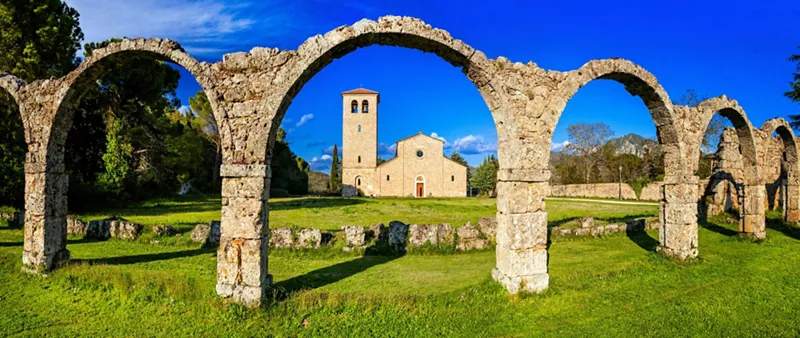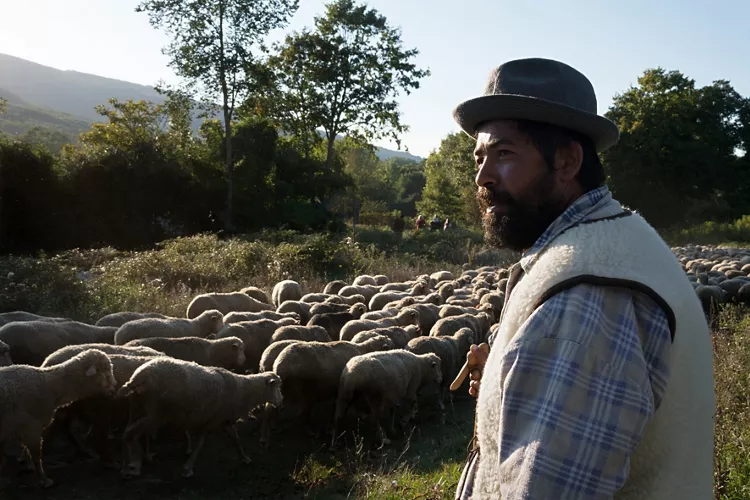Molise, a tiny region with grandiose landscapes: come and discover its history and culinary tradition
Molise is a region steeped in history, characterized by numerous tasty food and wine delicacies, but also by rich nature reserves and villages that seem crystallized in history. A destination yet to be discovered, amid marvelous seashores and breathtaking high cliffs
1. Origins and history of Molise

The Molise region shared its history with Abruzzo until the fall of the Roman Empire, as evidenced by findings in Pineta of Homo Aeserniensis, who moved between the two regions on a seasonal basis.
All the main centers in Molise became Roman colonies with the conquests during the Social War and the Samnite Wars and Second Punic Wars (such as Morrone del Sannio, Isernia, Larino, Venafro, and Pietrabbondante), with the formation of new Christian-led urbanizations, such as the Diocese of Trivento, until the Normans arrived.
Invasions by the Goths and Lombards followed and, after the latter’s conversion to Catholicism, the church gained much power over Molise.
A key date in the history of Molise is 1221, when Frederick II, Holy Roman Emperor turned Molise into a district of imperial justice. Several monasteries were founded here, including the splendid site of the Madonna delle Grotte in Rocchetta a Volturno.
2. The main cities of Molise

Termoli is an ancient town with fortified walls, dominated by the imposing Swabian Castle, and awarded Europe’s Blue Flag on numerous occasions thanks to the marvelous clarity of its sea. At this popular destination, you can find sports facilities, state-of-the-art hotel services, and well-equipped beaches.
Campobasso, the capital of the region, offers truly unique views. Among its iconic symbols are the Castle Monforte, a national monument and the city’s highest point perched on top of a hill; the Church of San Giorgio, dating back to the 12th century and boasting a Gothic style; and the Church of Sant’Antonio Abate, with its beautiful late-Renaissance façade and lavish Baroque interior.
The province is home to countless archaeological finds, such as the village of Campomarino, which dates back to prehistoric times, and numerous necropolises.
Isernia, the capital of the Samnite people, has a very ancient history, told today through its narrow, traditional alleyways.
The Fontana Fraterna (“Fraternal Fountain”) is one of the best-known monuments in the area: it has six water jets and a fascinating loggia shape made of limestone blocks, most likely from ancient Roman monuments.
Finally, Ferrazzano is a village known for its houses that all seem to embrace one another: they are built very close together to protect from the cold weather. Located in a strategic position on the ancient Molise communication routes, it offers wonderful views.
3. What to see in Molise: 4 unmissable sites

During a holiday in Molise, it is well worth taking the time to visit Campitello Matese, a ski resort with 40 kilometers of slopes, rich in lakes, forests, caves, grottos, and meadows, as well as unique paths ideal for walking, horse riding, mountain biking or quad biking, and even paragliding.
A trip to the province of Isernia gives you the opportunity to admire the Abbey of San Vincenzo al Volturno. This ancient monastic building where time seems to stand still brings together history, spirituality, and pristine surrounding nature.
While in the area, be sure not to miss out on a visit to the well-kept Lake of Castel San Vincenzo in the Abruzzo, Lazio, and Molise National Park, where you can see the peaks of the Mainarde Mountains reflected in the sparkling turquoise water, surrounded by forests. Though it does not look artificial, it was built in the late 1950s as a means of generating hydroelectric power.
Fornelli, one of the most beautiful villages in Molise, also merits a stop. Known as the Land of Towers from the Norman and Angevin periods, but also as the City of Oil, thanks to the excellent quality of the oil produced in its countryside, it boasts a historical center and urban structure that has remained unchanged over the centuries.
4. Unusual places in Molise: 3 destinations for curious visitors

Intrigued by destinations off the beaten tourist track?
We recommend searching for the “Tratturi”, ancient beaten-grass sheep tracks along which shepherds, from pre-Roman times until a couple of centuries ago, would move their flocks each season. This well-known phenomenon of the transhumance of livestock has marked the rural South by following strict routes and ensuring an economic livelihood even in the most isolated areas.
Or you can keep an eye out for the Sanctuary of Castelpetroso in the province of Isernia. Looking like a medieval castle, it stands in the middle of the woods and has a history of alleged apparitions of the Virgin Mary, dating back to 1888, when the Virgin is said to have appeared with the bleeding Jesus in her arms as an offering to humanity.
Finally, it is also worth visiting Sant’Angelo Limosano, a village sitting on a hill 900 meters above sea level that dominates the Biferno valley, offering panoramic views that even reach as far as the Tremiti islands, weather permitting.
5. Typical Molise products: 5 specialties

Molise cuisine is rich in flavors from simple but skilfully used ingredients.
The most iconic dish is fusilli alla Molisana, the pasta shape invented here, seasoned with a sauce of lamb and pork or veal sausage.
More characteristic than bacon here is the local guanciale: pig’s cheek, seasoned with salt, pepper, garlic, and Diavolillo chili pepper. It is hung on a pole for a month in an enclosed place by an oak-wood fireplace, before being left for two more months in the open air.
Equally delicious is the Muscisca, a dried, cooked sausage eaten in strips. There is no sausage without cheese: the ancient Caciocavallo of Agnone is made from raw cow’s milk, matured in natural caves for three months. The perfect way to wash down your meal is a delectable glass of Biferno: one of Molise’s most prestigious wines that comes in white, red, and rosé.
6. Events in Molise
Traditional events in Molise include La Carrese, the traditional ox-cart race linked to celebrations in honor of Saint Leo, a Benedictine monk who lived in the Monastery of San Felice near Cliternia.

